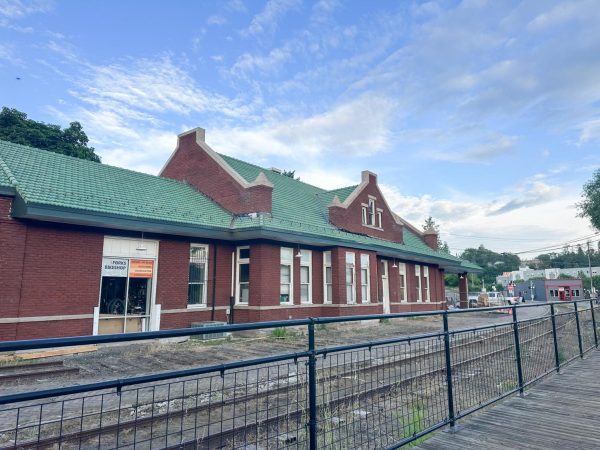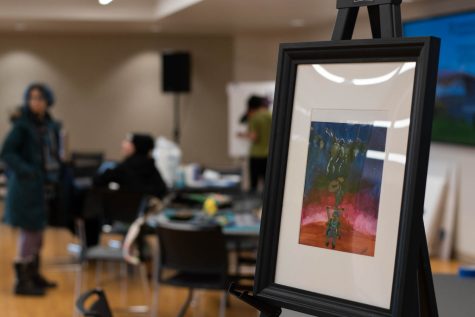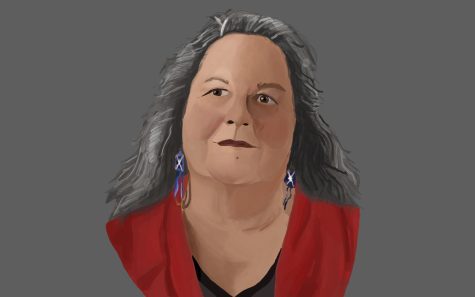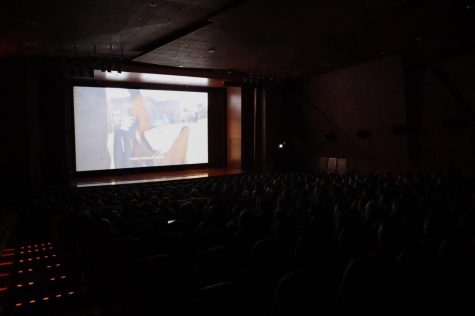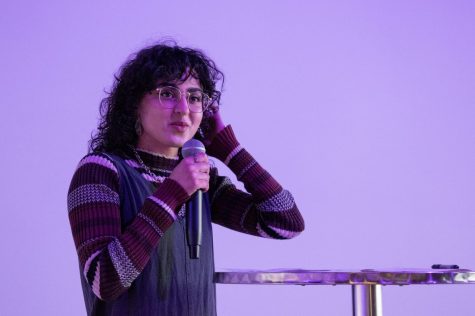An artistic reflection in fine arts Gallery 2
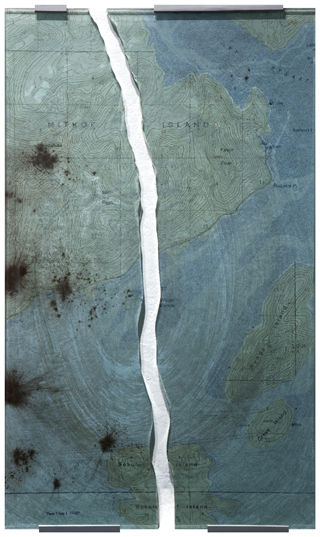
WSU alumnus Alex Gibson’s glass mixed-media art exhibit will be on display in the fine art department’s Gallery 2 until Dec. 5, 2014.
November 17, 2014
After seven years, a WSU alumnus returned to campus to tell a story through glass work.
The reflective glass panels question the difference between recorded history and personal history through narrating the travels of Alex Gibson’s friend who disappeared. The WSU campus is the third of seven locations for the exhibit’s tour, each stop of which is a place Gibson knows his friend.
Each of the seven main glass panels is laser-etched with digital imagery and fused together in a kiln with pigments and graphite. Gibson said a map was applied to the back of the glass to narrate the known travels of his lost friend. He said a lot of people react viscerally to the story of his lost friend, but that isn’t the definitive message of his work.
“It uses that story to tell another story,” Gibson said.
Kiley Branson, a teacher and Gibson’s wife, said his work was a way of processing the loss of a friend. Branson said she also knew the missing friend who inspired the exhibit concept and traveled to the same locations. She said walking down the streets in those towns, someone could only wonder if their friend had walked the same streets, but they couldn’t know.
“It makes you think about what you really know about people and their experiences,” Branson said.
Gibson said he can only go to those places and see the technical history of where his friend traveled, but he will not know the personal history of each day he lived in those places. Among the seven panels are a few smaller glassworks that show places Gibson’s friend might have gone. He said he worked around that idea of it being OK to have your own private history.
“History is a personal thing,” Gibson said.
Squeak Meisel, WSU sculpture and installation assistant professor, had known Gibson during his time at WSU. He said it was interesting to see Gibson after all those years away and after earning his master’s degree to see how he had changed and how his work had changed.
“It’s two dimensional work, and often two dimensional work isn’t considered spatial,” Meisel said.
Gibson’s work is unique in capturing three dimensional spaces that his friend could or could not have visited, he said.
“A basic truth in his work is that existential known and unknown,” Meisel said.
He said it was interesting that Gibson worked with glass and tapped into the viewer’s own reflection to achieve his message.
“It’s nice when people get past that initial narrative and start looking at themselves,” Gibson said.
The reflective glass surface lets the viewer see themselves in a history that can be tracked through records, but is also only known by the one who lived it, he said.
The exhibit will be up in the Fine Arts Gallery 2 until Dec. 5. Gibson will attend the closing reception on Dec. 4 from 4 p.m. until 7 p.m.










